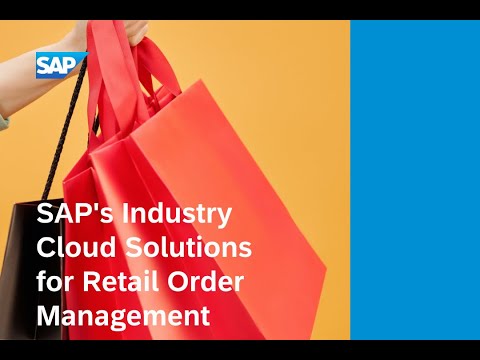Have you seen the Oscar-winning film Everything Everywhere All At Once? If you don’t know it but enjoy stories of multiverses and alternate timelines, then it is probably worth your time. What you may not know is that the film is a metaphor for the challenges of retail and omnichannel order management.
Much like Evelyn, the protagonist in the movie, retail is undergoing an existential crisis. As new ways of doing business have appeared – especially e-commerce – the future of brick-and-mortar often feels uncertain. Should retailers abandon the main street for the metaverse?
With new ways of selling and new ways delivering on those sales, retailers can struggle to adjust. Order management software exists to help bridge these different worlds.
In an omnichannel context, order management is critical, but it is hard to do well. It comes down to where your customers are, where your products are coming from, and how to bring them together profitably while providing a good experience.
Customers place their orders using everything. Orders come via computers, mobile devices, social media, customer service agents, game consoles, and even the store. No matter the sales channel, customers want to see what you have to sell, regardless of platform or location. They expect a consistent brand experience and do not want to feel like your business silos are alternate universes that they need to jump between.
Products can be anywhere and everywhere. Products may be in a warehouse across the country, the store closest to the customer, or at a vendor in another country. A retailer wants to make this product available to their customers no matter where it sits. That requires having visibility into product availability at any location, across all channels.
Bringing the customers and products together requires seamlessly connecting all the sales channels, fulfillment channels, and delivery methods all at once. Too often the flow from sales channel to fulfillment channel is run by disjointed processes and systems trying to connect one channel to another with hard-coded, inflexible business rules. This can lead to inconsistent experiences for customers and makes it difficult to add new channels or processes as business needs change. Nothing in recent memory showcased the need for flexibility quite like the COVID-19 shutdowns and the need for new fulfillment methods, like curbside pickup.
The answer to this complex retail landscape is omnichannel order management.
Evelyn crossing realities can be seen as a metaphor for orders crossing sales channels and fulfillment channels. But, the key to successfully managing retail orders from different sales channels is bringing them together just as the characters’ different selves combined.
SAP Order Management foundation does this by allowing you to submit orders from any sales channel. This retail customer experience product, in conjunction with partner services like SAP Order Management for sourcing and availability, can take the order and split it across multiple fulfillment channels like enterprise resource planning (ERP), warehouse management, in-store, and drop shippers. The fulfillment systems in return can send updates back to the foundation so that you can track order information in one place. You can have everything from everywhere all at one endpoint.
Adding new channels, whether sales or execution, can be time-consuming when quick time to value makes all the difference. In the movie, Evelyn harnesses the different powers of multiple parallel-universe Evelyns by absorbing their skills, the same way the sourcing and availability component and the foundation can enhance the benefits of additional fulfillment channels without starting from scratch.
In the movie, we also see that as Evelyn experiences all these amazing realities, she keeps going back to her starting point. Sometimes that’s true for products, too. Returns are an increasing part of the retail business, especially with online ordering. To help simplify the returns process, know what to do when goods are returned, and work out how to avoid having the same problems in the future, businesses can use SAP Intelligent Returns Management.
You might notice that the order management process relies on more than one product. This is always true. The life cycle of an order touches many systems. Those include sales channels like SAP Commerce, ERP systems like SAP S/4HANA, as well as payment providers, tax engines, loyalty systems, and beyond. Order management is what makes all those systems play nicely together. SAP Order Management is made up of a composable set of applications:
- SAP Order Management foundation
- SAP Order Management for sourcing and availability
- SAP Intelligent Returns Management
- SAP Omnichannel Sales Transfer and Audit
These services can be used as standalone solutions, but they are stronger together.

Change can mean growth without leaving behind what first led to success. New channels and business models don’t mean leaving behind brick-and-mortar retail. Indeed, bringing them all together, like with SAP Order Management, may be exactly the kind of change needed to keep the industry going.
Learn more about how industry cloud solutions from SAP can help businesses build a more flexible, robust, and enjoyable shopping experience for customers.
Adam Davies is lead product manager for SAP Order Management foundation at SAP.



